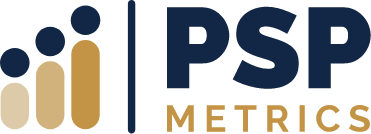Leading Change Effectively: Focus on the Bright Spots
Change often feels necessary when things (people, processes, tools) aren’t working as envisioned. After consulting stakeholders, we declare, “It’s time for a change.” But people often react with fear and resistance. Why? Change is scary and exhausting because it disrupts predictability and requires mental energy.
In “Switch: How to Change Things When Change is Hard,” Chip and Dan Heath suggest moving beyond a problem-focused mindset to identify “bright spots.” Typically, we ask, “What’s broken, how did this happen, and how do we fix it?” While these are valid questions, they can trap us in a cycle of focusing on problems.
According to Chip and Dan’s research, psychologists have found that our language and perceptions are biased toward negativity. For example:
- 62% of 558 examined emotion words were negative. Among the 24 most commonly used emotion words, only 6 were positive.
- People spend more time viewing photos of bad events.
- When people learn something bad about someone, they weigh it more heavily when assessing the person overall.
- People discuss negative events more when reflecting on meaningful life experiences.
To lead change effectively, we need to focus on solutions instead of problems. For instance, if a child gets a bad grade, punishing them is a problem-based approach. Instead, discussing behaviors that lead to better grades (like taking notes and studying) is a solutions-based approach, increasing the chances of improvement.
Manufacturing is a prime example of a solutions-based approach. In this industry, where margins are tight and defects are costly, production managers swiftly focus on finding solutions. When faced with bottlenecks, extended wait times, or defects, they identify the root cause not to dwell on the problem but to find a solution. The goal is not to assign blame or punish but to increase efficiency through change.
To lead change successfully, shift from dwelling on what went wrong to highlighting what works well and how to build on it. This solutions-based approach makes change easier and more effective.
Challenge:
Identify a current change effort in your team or organization. What problem are you trying to solve? Now, put the problem aside and find the bright spots. What are you doing well, and how can these strengths drive the change? Shift the focus from problems to solutions to lead more effectively.
PSP’s Solution:
We evaluate motivators, intellectual abilities, success factors, and work behaviors to create Individualized Development Plans (IDPs) with industry-specific suggestions targeted to assets and weaknesses. Understanding what motivates an employee can help you emphasize their strengths and implement positive change in your organization.
Contact us today to revolutionize your recruitment process!
Reach out to Jim Taylor to learn more.
Comments are closed.

